When did modern humans first arrive in the Land of Israel? When did Jerusalem emerge as a major regional center? Who constructed Wilson’s Arch near the Temple Mount? Can ancient volcanic eruptions be dated using olive branches? What did early hunter-gatherers in the Middle East eat — and when did almonds first appear in our ancestors’ diet?
These are just some of the questions that, in recent years, have been answered by a team of researchers at the Weizmann Institute of Science’s particle accelerator — the only accelerator in Israel dedicated to carbon-14 separation.
11 View gallery
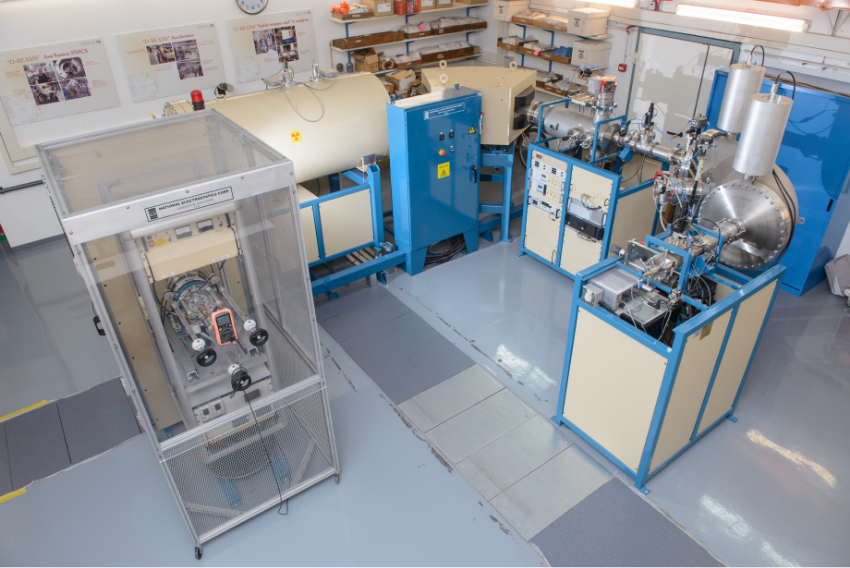

A two-million-dollar gem offering a unique window into the ancient past of the Land of Israel. The Dangoor Research Accelerator Mass Spectrometry (D-REAMS) laboratory at the Weizmann Institute of Science in Rehovot
(Photo: Itai Belson, Weizmann Institute of Science)
This method enables researchers to determine the age of archaeological finds of biological origin, determining not only the age of bones and wooden beams but even tiny items such as charred wheat seeds and minute straw fragments embedded in ancient plaster.
Formally known as the Dangoor Research Accelerator Mass Spectrometry (D-REAMS) laboratory, the system is the crown jewel of the institute’s Scientific Archaeology Unit. Since its establishment in 2013, at a cost of roughly $2 million, the research team has led a broad array of studies, continually uncovering new pieces of the complex puzzle that is the history of the Land of Israel and its people.
A radioactive clock
The method of dating artifacts using carbon-14 was developed in the mid-20th century and is based on a fundamental scientific principle: while most carbon atoms in nature are stable, a small fraction are radioactive. All carbon atoms have six protons in their nucleus. About 99% also have six neutrons, with an atomic mass of 12, forming carbon-12, the most common isotope. Roughly 1% have seven neutrons, making them carbon-13. A minute fraction—approximately one in a trillion atoms—have eight neutrons. These rare atoms are carbon-14, the radioactive isotope used in radiocarbon dating.
Chemically, carbon-12, carbon-13 and carbon-14 all react similarly with oxygen to form carbon dioxide and are incorporated in the same way into biological molecules. However, they differ physically in their mass and, in the case of carbon-14, in their radioactivity—that is, the rate at which they decay.
Radioactive materials decay spontaneously, and the more radioactive a substance is, the faster this decay occurs. While the exact moment any single atom decays is random, the overall rate of decay can be described by its "half-life"—the time it takes for half of a given quantity of the substance to decay. For example, if you had a gram of francium-221—a highly radioactive element—you would have only half a gram left in less than five minutes. After another five minutes, just a quarter of a gram would remain, and the amount would continue halving over time.
11 View gallery
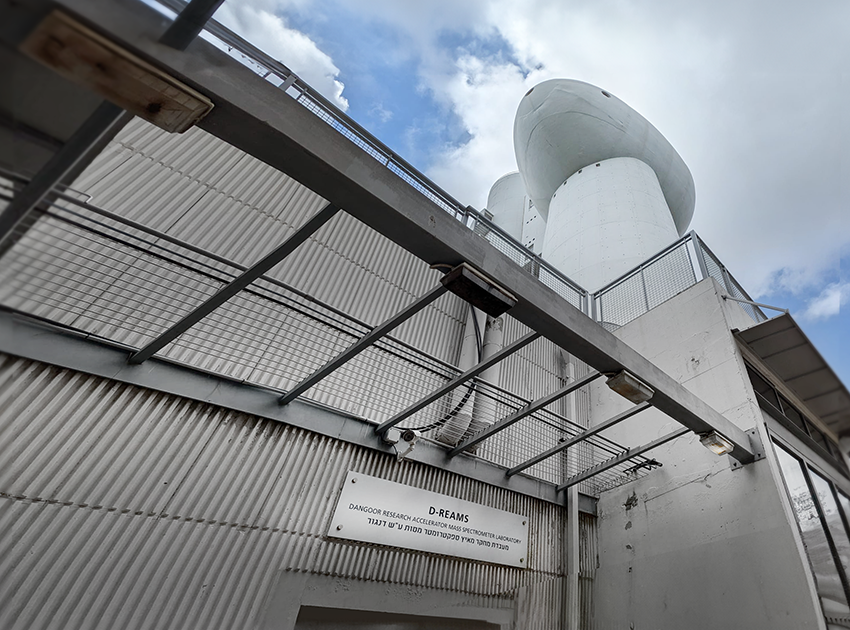

Built in 2013, the accelerator at the Weizmann Institute is situated at the base of the Institute’s historic particle accelerator tower. Entrance to the accelerator laboratory
(Photo: Ettay Nevo)
Carbon-12 and carbon-13 are extremely stable, capable of existing for millions of years without any significant reduction in quantity. In contrast, Carbon-14 is radioactive, though far less so than elements like francium. It has a half-life of about 5,700 years. This means that if a gram of carbon-14 had been sealed in a box around 3,700 BCE, a modern archaeologist would find approximately half a gram remaining today. Archaeologists in the 78th century CE would find only a quarter of a gram, and so on.
This half-life makes carbon-14 an excellent biological clock for dating processes that span tens of thousands of years. If we knew with certainty that exactly one gram had originally been stored, we could easily calculate how much time had passed based on the amount of material remaining. The challenge, however, is that even when we have a carbon-14 sample, we usually don’t know its original quantity—making it difficult to accurately set our radioactive clock.
Or, perhaps we can. Carbon-14 is produced in the atmosphere through radioactive interactions triggered by cosmic rays. Living organisms constantly exchange carbon with their environment, incorporating it into biological molecules like proteins, sugars, fats and nucleic acids. However, once a plant or animal dies, this exchange stops — and the radioactive clock starts ticking. If we know the concentration of carbon-14 in the atmosphere at the time of death, we can calibrate the clock and estimate the age of the sample based on the amount of remaining carbon-14.
But how do we know how much carbon-14 was in the atmosphere 10,000 or 20,000 years ago? The answer lies primarily in ancient trees. A tree’s age can be determined quite accurately by counting the growth rings in its trunk. Scientists can then sample material from specific rings corresponding to particular years to measure the carbon-14 concentration at that time. This data is used to build a calibration curve, which links known levels of radioactive carbon to specific time periods. By comparing the carbon-14 concentration in a sample to this curve, we can determine its age.
11 View gallery
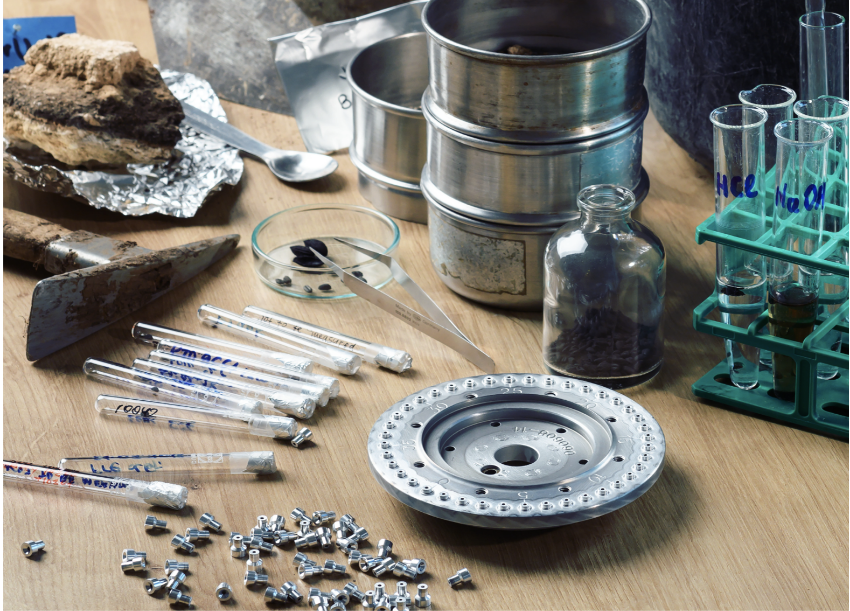

Able to detect carbon-14 atoms even in tiny samples. Charred grain seeds and olive pits, alongside some of the equipment used for the initial processing of samples before they are introduced into the accelerator
(Photo: Ohad Herches, Weizmann Institute of Science)
So how is carbon-14 in a sample actually measured? That’s where the particle accelerator comes in. The accelerator ionizes carbon atoms — giving them an electric charge — and uses powerful magnets to accelerate the charged particles to speeds of about 3,000 kilometers per second (nearly 11 million km/h). This all takes place in a room roughly the size of a standard classroom.
At those extreme speeds, additional magnets separate the atoms by mass: carbon-12 and carbon-13 atoms are deflected away, and only carbon-14 atoms reach the detector at the end of the accelerator. This method allows for the detection of even individual atoms, meaning extremely small samples — just a few thousandths of a gram, like a single grain of wheat — can be analyzed.
“If we stacked A4 sheets of paper from here to the Moon, with each sheet representing a carbon atom, only three or four of those sheets would represent carbon-14,” explained Dr. Lior Regev, a senior scientist at the accelerator lab, in an interview with the Davidson Institute website. “But because there are so many carbon atoms in a sample, we can still detect enough carbon-14 even in tiny amounts — sometimes as small as a single milligram. While other methods require large samples — several grams or more — we can date truly microscopic findings.”
The bigger picture
Around the world, several dozen particle accelerators are used to date archaeological finds. What sets the accelerator at the Weizmann Institute apart is that it operates not merely as a service facility, but as a fully integrated research laboratory.
Rather than simply receiving samples from archaeologists and returning an estimated age — often expressed as a broad age range — the scientists at Weizmann are involved from the very beginning of the archaeological process. They develop new methods for collecting biological samples and specialize in using radiocarbon dating alongside a range of other scientific tools to answer complex questions that traditional archaeology alone cannot always resolve.
11 View gallery
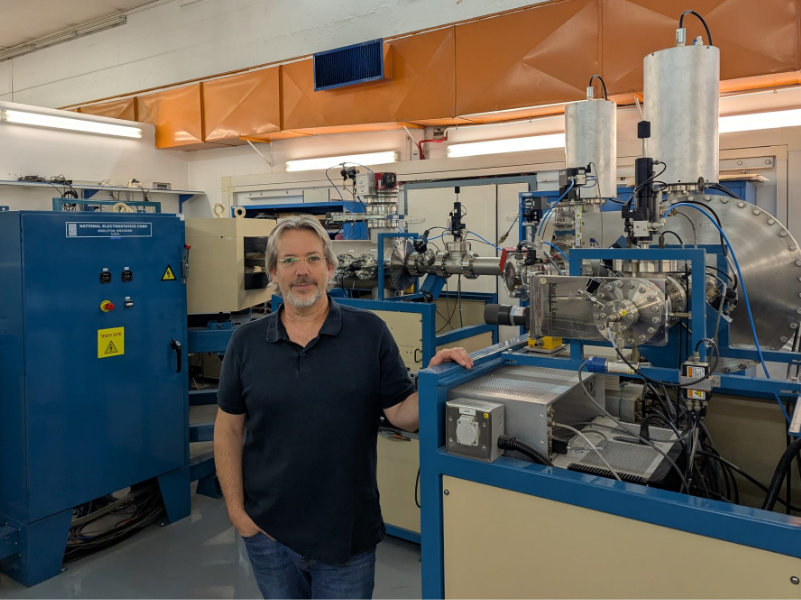

Turning archaeological questions into science, with great precision and high added value. Lior Regev at the particle accelerator
(Photo: Ettay Nevo)
“We take archaeological questions and turn them into science,” says Prof. Elisabetta Boaretto, head of the laboratory. “We develop new working methods, and we look at the broader picture — such as climate changes in ancient periods — to deepen our understanding of the findings and achieve more accurate results. Our students are involved in everything: chemistry, measurement, data analysis and interpretation. They also collaborate with experts from many fields, including history, archaeology, climatology, architecture and more. We integrate all of these disciplines to achieve the most complete understanding possible.”
“We’re there throughout the entire process,” adds Regev. “We excavate alongside archaeologists, collect the samples ourselves and stay involved all the way through to constructing the chronological model. It’s a revolution in the field — changing how archaeological research is conducted — and it’s proving its value. With this method, we bring high precision and significant added value to the research.”
The Old City
In recent years, the research group has focused on uncovering the history of Jerusalem through a series of collaborative studies with the Israel Antiquities Authority and Tel Aviv University. The radiocarbon dating in these projects is led by Dr. Johanna Regev, who serves as an external academic consultant due to staffing regulations that prevent married couples from working in the same research group — and in the Regev household, a shared passion for archaeology runs deep.
Regev was supervised by Prof. Elisabetta Boaretto during both her master’s and Ph.D. studies, and was already immersed in radiocarbon dating early in her academic journey. “In my master’s thesis, we dated finds from the Early Bronze Age and discovered that they were 200–300 years older than previously estimated,” she explained.
“In my Ph.D., we investigated this more deeply and showed that the dating of all sub-periods within the Early Bronze Age needed correction. For example, the Early Bronze III period, thought to have ended around 2300 BCE, actually ended about 300 years earlier.” These revised timelines have important implications for our understanding of the broader regional context and dynamics, such as the relationships between the local populations and Egypt.
What made this discovery possible were the meticulous sampling methods developed by Regev and Boaretto for biological remains such as cereal grains, legumes, date and olive pits, twigs and more. Since seeds rarely survive uncharred for millennia, most of the materials studied are carbonized. “For example, if a charred olive pit is found inside mudbricks forming a wall, it could have sat in the soil for centuries before being used to make bricks, so its age doesn’t necessarily reflect the age of the wall,” Regev told the Davidson Institute website.
11 View gallery
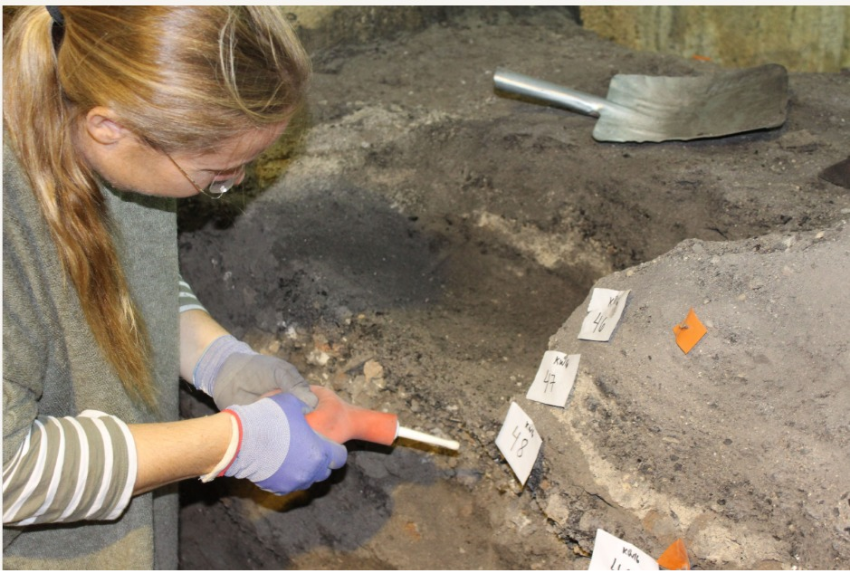

Attention to context, sampling method, and multiple samples enables revolutionary precision in dating. Johanna Regev taking samples during an excavation in Jerusalem
(Photo: Yael Erlich)
“But if we examine the mortar binding the bricks and find seeds in ash used to make it, that more likely represents the actual construction time. That’s why it’s crucial for us to connect the material we date to the event, the building, the material culture. We pay very close attention to what we date and where the samples are taken from. The chemical cleaning process also varies by sample and significantly impacts results. Fortunately, this process is overseen by Evgenia Mintz, a lab veteran with 25 years of experience.
"In addition, dating a single context or layer is often insufficient due to natural fluctuations in atmospheric carbon-14 levels. Therefore, we aim to sample multiple layers, which enables revolutionary precision. Thanks to our strict attention to context and multi-sample approach, we can date finds with a precision of 20–30 years — compared to about 300 years in some historical periods. It’s a revolution.”
This scientific revolution, led by Regev and Boaretto, is also reshaping our understanding of the history of the Land of Israel — especially Jerusalem. “There has always been debate within the archaeological community about the size of Jerusalem in the 10th and 9th centuries BCE — the time traditionally associated with David and Solomon and the early division between the kingdoms of Israel and Judah,” said Regev.
“The debate partly stems from the limited findings from that period. Our studies, using radiocarbon dating with strict attention to sampling context, show that a substantial settlement already existed in Jerusalem during that time — and even earlier, in the 11th and 12th centuries BCE. Our research is still in its early stages. We often can’t yet determine the precise nature of the buildings we excavate or identify who lived in them or what they did. But based on the volume and nature of the finds, it was clearly a significant and lasting settlement — not a small or temporary outpost."
Deviating from the curve
Another significant achievement in the context of this study, reported in 2023 in the Proceedings of the National Academy of Sciences (PNAS), involved the successful radiocarbon dating of the period surrounding the fall of the Kingdom of Judah — a notoriously difficult era to date using carbon-14.
Spanning roughly from the 8th to the 5th century BCE, this period likely experienced fluctuations in atmospheric carbon-14 levels due to cosmic phenomena. Consequently, previous measurements often came with a wide uncertainty margin of up to 300 years.
11 View gallery
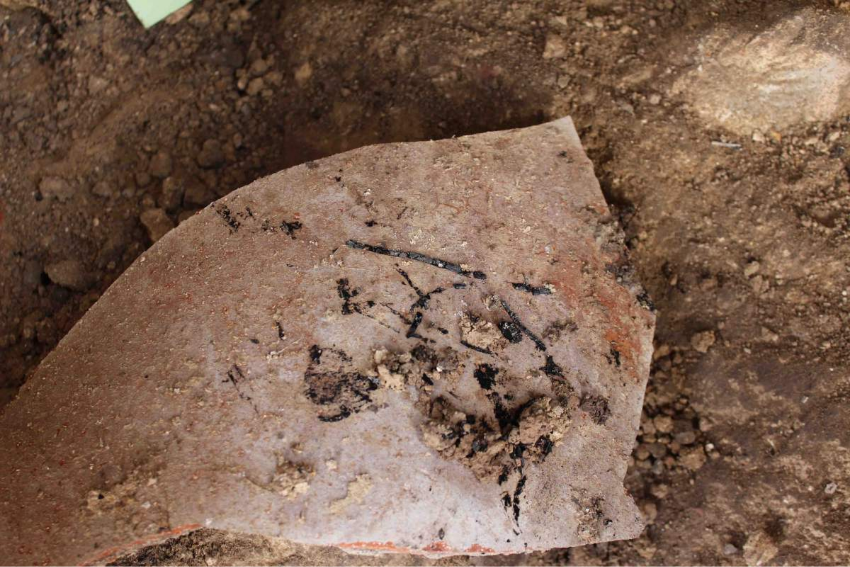

It is possible to compare radiocarbon dating to other independently dated findings and detect deviations from the calibration curve. Charred straw fragments on a jar from the time of the First Temple’s destruction
(Photo: Johanna Regev)
In this study, the researchers managed to achieve dating precision within just 10–20 years. Their work included analysis of several stratified flooring layers discovered one above the other, as well as artifacts associated with major historical events — such as the powerful earthquake mentioned in the Book of Amos, probably occurring between 766 and 750 BCE, and the destruction of the First Temple in 586 BCE.
These datings led to a surprising discovery: deviations from the standard calibration curve used for carbon-14 measurements. Even artifacts that were archaeologically dated with high confidence to the time of the destruction showed radiocarbon ages differing by several decades or more. These discrepancies likely arise because the calibration curve is based primarily on tree-ring data from Europe and North America, and may reflect local variations in climate or atmospheric conditions that affected carbon-14 formation at the time.
“We are now studying these deviations and working to adjust the calibration curve based on the local findings,” said Lior Regev.
Beyond the arch
One particularly intriguing study in the ongoing exploration of Jerusalem’s past that sparked great interest focused on a long-standing question: Who built Wilson’s Arch — or more precisely, when was it built?
Named after the 19th-century British explorer and surveyor Charles Wilson, who first documented it, the arch is now part of the Western Wall Tunnels, but in the past, it likely served as part of a structure leading to the Second Temple.
In fact, there are two arches, and it is possible that one was constructed only after the Temple’s destruction. Estimates of their age have ranged from the time of Herod, around the beginning of the Common Era, to several centuries later. “The arches and a small theater-like structure nearby were covered over the years with material from many different periods, making it impossible to determine their age based on associated finds,” explained Johanna Regev.
11 View gallery
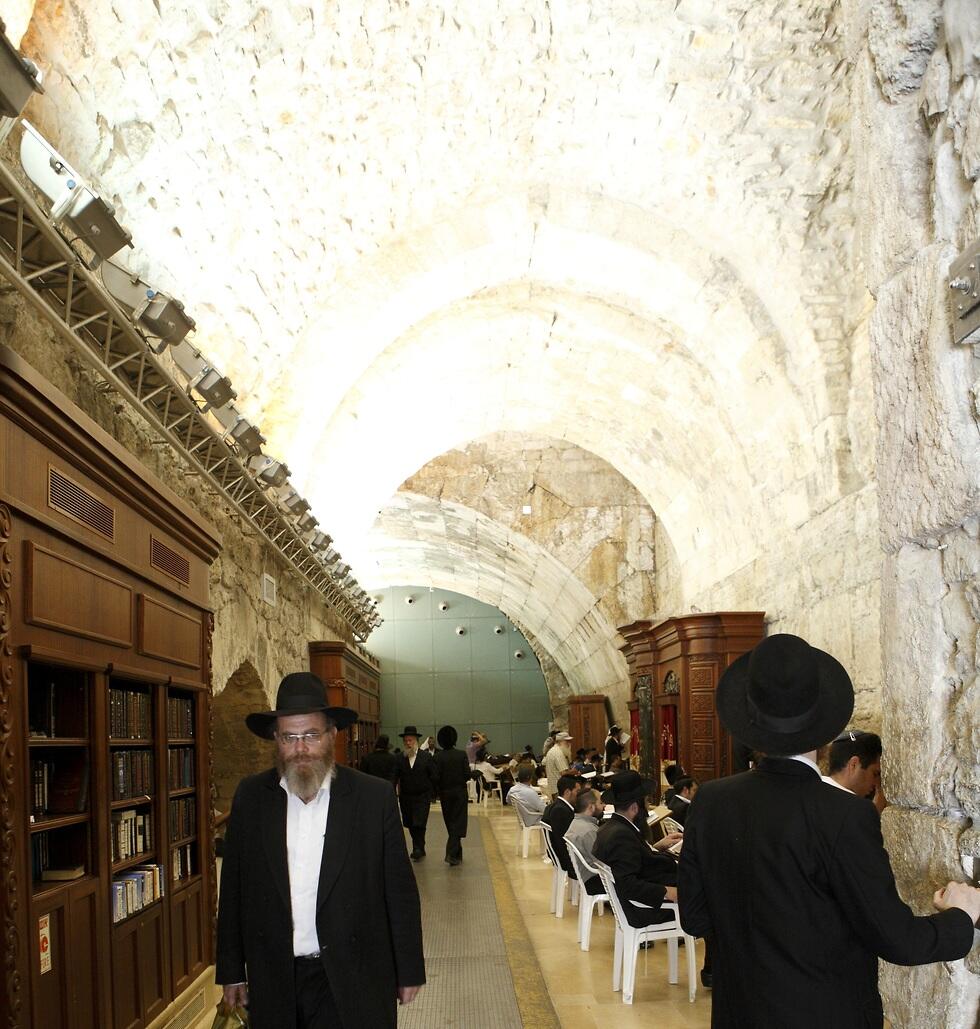

Both arches were built before the destruction of the Second Temple, and the historical mystery was solved thanks to radiocarbon dating. Wilson’s Arch in the Western Wall Tunnels
(Photo: Shutterstock)
“Here too, we carefully sampled mortar from between the stones and found wheat, barley and fig seeds embedded within it. Based on their radiocarbon dating, we determined that the northern arch dates to the time of Herod or shortly thereafter, while the southern arch belongs to the period of the early Roman governors — before the destruction of the Second Temple.”
Another surprising discovery involving carbon-14–dated seeds challenged previous assumptions about the age of the fortification tower near the Gihon Spring. Archaeologists had previously dated the tower’s construction to the Middle Bronze Age, around 1800 or 1700 BCE. However, the researchers found seeds beneath the tower’s foundation stones that dated to the 10th and 9th centuries BCE, suggesting the tower was built nearly a thousand years later than previously thought.
“Not everyone accepts this conclusion,” Regev noted, “but the fact remains that we uncovered a sequence of samples dated to that later period, and only on top of them were the foundation stones laid.”
Transitions between eras
Radiocarbon dating is a powerful tool for determining the age of artifacts — but only up to about 50,000 years. While carbon-14 has a relatively long half-life, it is not infinite. Beyond that timespan, so little carbon-14 remains that even advanced particle accelerators can no longer detect it.
Most of the findings from Jerusalem fall well within this range, but other discoveries in the Land of Israel push the method to its limits. This region has long served as a key crossroads for several species of early humans migrating from Africa to Asia and Europe. Our own species, Homo sapiens, first emerged in Africa roughly 250,000 years ago and likely dispersed in several waves.
11 View gallery
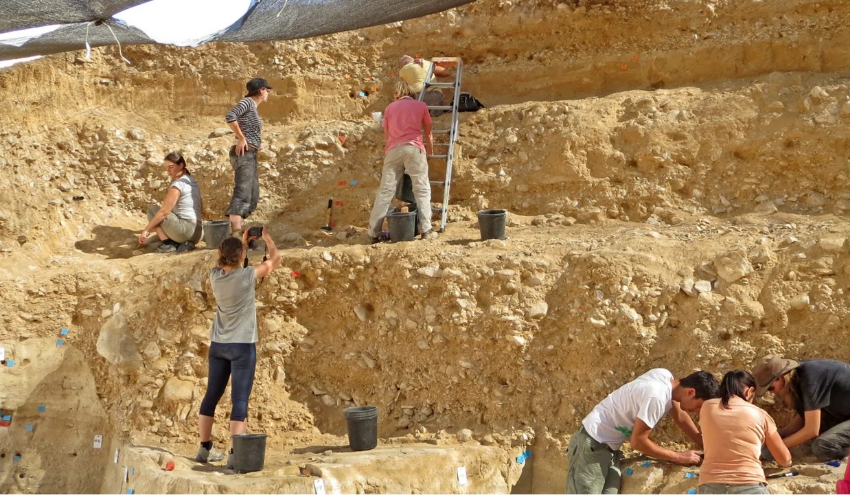

A relatively rapid cultural transition during the last major migration event of modern humans out of Africa. Excavations at the Boker Tachtit site
(Photo: Elisabetta Boaretto, Weizmann Institute of Science)
One notable site is Boker Tachtit, located in the Negev Desert within the Ein Avdat Nature Reserve, where remains of early modern humans had previously been discovered — though their dating was imprecise, spanning a wide range.
In a study led by Boaretto, the team determined that charcoal remains from ancient hearths in the area date to 49,000–50,000 years ago. They also determined that various types of flint tools found at the site suggest a relatively rapid transition from the Middle Paleolithic to the Upper Paleolithic period. The findings also suggest that the site is part of the last major migration event of modern humans moving north from Africa, and that these early humans likely encountered Neanderthals in the region a few thousand years before the Neanderthals' extinction.
Another transitional period studied by Boaretto deals with the Natufian culture — a hunter-gatherer society that appeared in the region around 15,000 years ago and persisted for about 3,000 years. Scholars traditionally divided their history into early and late phases, with many attributing the shift to climate changes.
Boaretto and her colleagues dated charred plant food remains from the period at several key sites, such as the Raqefet Cave and the Shubayqa site in northern Jordan. "We showed that the transition was not synchronized with climate changes,” Boaretto explained. “It turns out that humans were capable of adapting to these changes, and that changes in their way of life did not occur immediately in response to environmental shifts.”
A volcano with an olive leaf
Unlike Johanna Regev, who began her academic journey in archaeology, her partner in life and research, Lior Regev, initially pursued biology. He completed his bachelor's and master's degrees at the Technion before being drawn into the world of carbon-14. He earned his Ph.D. at the Weizmann Institute of Science, where he developed methods for analyzing and dating ancient plaster, working under the supervision of Prof. Boaretto and Prof. Steve Weiner, the founder of the field of scientific archaeology at the Weizmann Institute.
Later, Regev trained in dendrochronology — the science of dating trees by their growth rings — in the United States, and returned to Israel to establish Weizmann’s dendrochronology laboratory. Determining the age of trees is the primary method for calibrating radiocarbon dating curves, but it is also a significant field of research in its own right.
11 View gallery
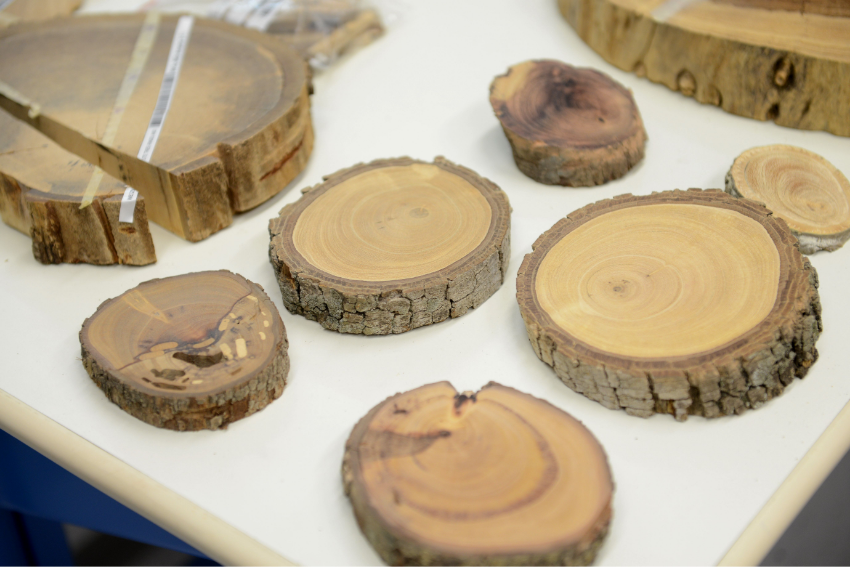

The trees reveal part of the story and help uncover inaccuracies in the research. Tree rings in the accelerator laboratory
(Photo: Ohad Herches, Weizmann Institute of Science)
About 3,500 years ago, the volcano on the Mediterranean island of Santorini erupted in a cataclysmic event. Some scholars link this eruption to the collapse of early Greek civilizations, while others connect it to biblical accounts, such as the plague of darkness.
However, the exact date of the eruption remains the subject of debate. Archaeological evidence from across the Mediterranean places it around 1500 BCE, while radiocarbon dating of a charred olive branch buried in volcanic ash has suggested a date more than a century earlier. This dating, however, is controversial, partly due to the unique growth patterns of olive trees.
Get the Ynetnews app on your smartphone: Google Play: https://bit.ly/4eJ37pE | Apple App Store: https://bit.ly/3ZL7iNv
Researchers from the accelerator lab, together with graduate student Yael Erlich, studied the growth of olive branches from trees a few decades old in the Galilee. Using micro-CT scans to visualize the tree rings and combining that data with carbon-14 dating, they gained new insight into olive tree growth.
The ability to date such young samples is made possible by the nuclear tests conducted by world powers in the 1950s and 60s. Despite their many detrimental effects, these tests doubled the amount of carbon-14 in the atmosphere, allowing tree growth to be tracked with unprecedented resolution — sometimes down to just a few months. The researchers found that the development rate of olive branch rings is not uniform. At certain times, a trunk or branch can grow more on one side than the other, suggesting that relying on olive branches for eruption dating may lead to inaccuracies.
Another tree-related project underway at the accelerator lab explores when early humans first began eating almonds and domesticating almond trees. “At sites like Manot Cave, charred almond remains dating back 30,000–40,000 years have been found,” explained Boaretto. “Wild almonds are very bitter and toxic, but the almond likely became more edible when the tree received ample water. It’s a challenging study that also links climatic changes to shifts in human behavior.”
Learning the language
The carbon accelerator is located at the base of the historic particle accelerator of the Weizmann Institute, whose 57-meter-high tower has become one of the landmarks of the city of Rehovot. That accelerator was built in 1975 and, for about three decades until its closure, was used for experiments in nuclear physics.
11 View gallery
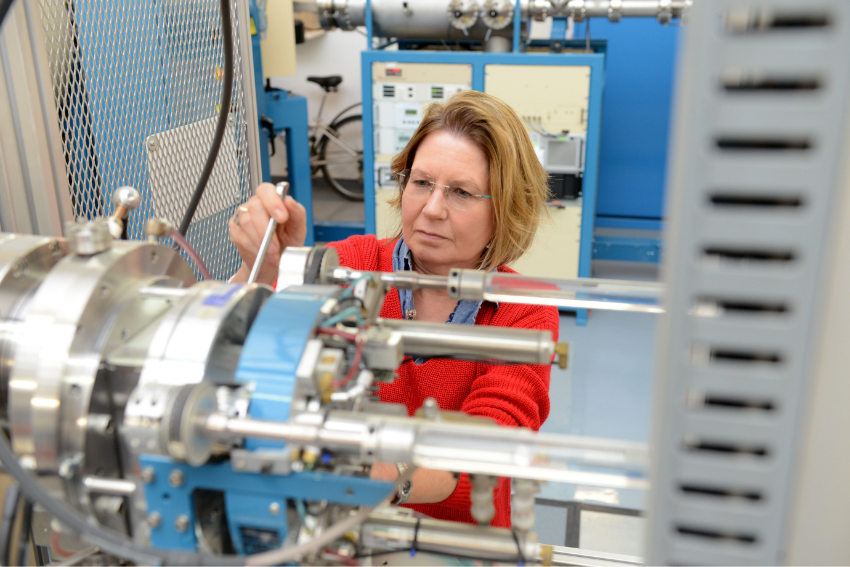

We are learning to read the language of isotopes and atoms, and constantly improving our understanding. Elisabetta Boaretto at the accelerator
(Photo: Ohad Herches, Weizmann Institute of Science)
One of the students who used it was Elisabetta Boaretto, who was born and raised in Italy. After completing a master’s degree at the University of Padua, she came to the Hebrew University of Jerusalem for her Ph.D., but used the Weizmann accelerator to study the environmental effects of nuclear power plants by analyzing radioactive iodine concentrations in ice samples collected from the poles.
During her postdoctoral work in Denmark, she worked with carbon-14, and when she received a position at the Weizmann Institute, she began studying archaeology and collaborated with Steve Weiner to establish such an accelerator at the institute.
The field of carbon-14 research has existed for many decades, but it is constantly evolving, thanks in no small part to the work of researchers at the Weizmann Institute. "One of the most enjoyable things about our work is developing new methods, diving deeper into materials and details," said Boaretto. "We are learning to read the language of isotopes and atoms, and we are constantly improving our understanding. And the best part is discovering something new and surprising."
Such discoveries may be just around the corner, with an anticipated upgrade to the accelerator that will allow it to sample atoms from gas instead of solid carbon, as is done today. "This will allow us to measure samples of less than 50 micrograms, twenty times smaller than what we can currently measure," explained Boaretto. "We will be able to date tiny things using the accelerator — like single grains of pollen, for example. It will open up new horizons for us."
The scientific revolution
Although radiocarbon dating brought about a scientific revolution in archaeology, not all archaeologists understood the technology’s potential or the importance of involving scientists throughout the entire research process, from planning and sampling to data analysis. "It’s a constant struggle to educate people that we are not a service lab receiving samples by mail, but full partners in the process," said Lior Regev. "We don’t lack students, but I would have expected the demand to study the field to be much higher."
11 View gallery
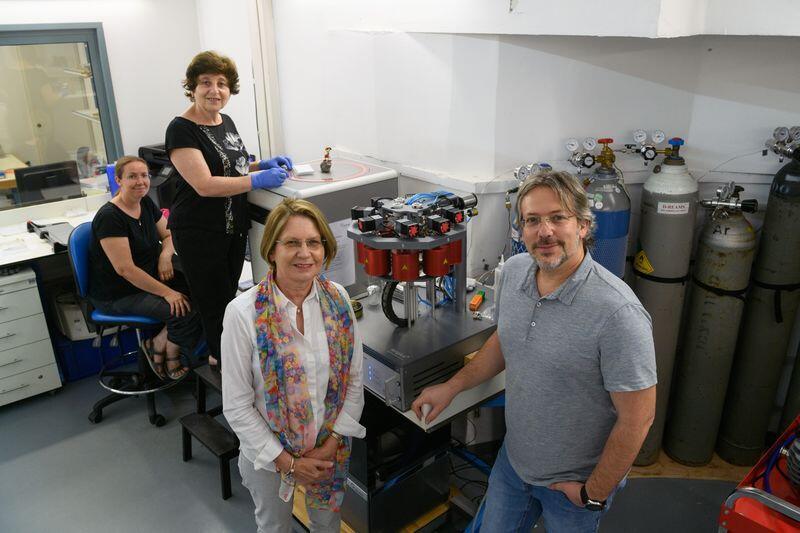

The most meaningful research has been made possible through close collaboration with archaeologists. From left: Johanna Regev, Evgenia Mintz, Elisabetta Boaretto and Lior Regev
(Photo: Ohad Herches, Weizmann Institute of Science)
"The most significant research has been made possible when there was close collaboration in the field with archaeologists, and a mutual understanding of each side’s expertise and contribution," added Johanna Regev. "When there was open and productive dialogue between us throughout the process, joint thinking about the chronological questions and building the best path to solve them, the research results consistently exceeded expectations."
"When you conduct an experiment in science, you try to isolate a single variable and measure it. In archaeology, there are many variables, and if we left them all uncontrolled, we wouldn't be able to achieve reliable dating," concluded Boaretto. "That’s why it’s crucial for us to close every possible gap beyond any doubt: to know exactly from which archaeological layer the sample is taken and what is being dated, to thoroughly clean the sample and to perform the chemical work precisely. This way, we can ensure that the dating is reliable and even discover phenomena like the deviations from the calibration curve."
Connecting stories
Archaeology offers a window into the lives of the cultures that inhabited this region long before modern times. “You can use your imagination to picture what people were doing at Boker Tachtit 50,000 years ago, or how they built the walls of Jerusalem,” says Prof. Boaretto. “But we aim to go beyond imagination — to understand these things more deeply, so we can create a picture that is not just imaginary and speculative, but grounded in evidence and as realistic as possible.”
“If I could travel back in time to one of the periods we study, I would choose Jerusalem in the 9th or 10th century BCE — to see what the city really looked like and what actually existed,” says Lior Regev. Johanna Regev would likely join him on that journey. “As someone who was born in Finland, I find it remarkable that Jerusalem is a city built of stone — and that you can piece together its historical image,” she says. “In Finland, buildings are made of wood, so you can’t study the past in the same way. In Jerusalem, every stone holds a story. And because the city has such a rich and continuous written history — from the Early Bronze Age through the Ottoman period — it’s possible to connect those stories to the very stones we uncover.”

